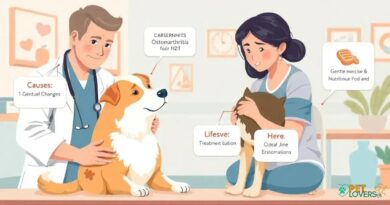What is Vulnerable behaviors
Understanding Vulnerable Behaviors in Dogs
Vulnerable behaviors in dogs refer to actions that indicate a state of fear, anxiety, or submission. These behaviors can manifest in various ways, including cowering, tail tucking, or avoiding eye contact. Recognizing these signs is crucial for dog owners and trainers, as they can help identify a dog’s emotional state and needs.
Common Signs of Vulnerable Behaviors
Dogs may exhibit a range of vulnerable behaviors, such as whining, barking excessively, or hiding. These actions often signal discomfort or stress in a particular environment. For instance, a dog that hides under furniture during a thunderstorm is displaying vulnerability due to fear. Understanding these signs can help owners provide a more supportive environment for their pets.
The Importance of Socialization
Socialization plays a vital role in reducing vulnerable behaviors in dogs. Early exposure to various environments, people, and other animals can help a dog build confidence. A well-socialized dog is less likely to exhibit fearful behaviors when faced with new experiences. Therefore, investing time in socialization can lead to a more balanced and secure canine companion.
Impact of Past Experiences
A dog’s history significantly influences its behavior. Dogs that have experienced trauma or neglect may display heightened vulnerability. For example, a rescue dog may be more prone to fearful reactions due to past abuse. Understanding a dog’s background can help owners tailor their training and care strategies to address these vulnerabilities effectively.
Training Techniques to Address Vulnerable Behaviors
Positive reinforcement training is an effective method for addressing vulnerable behaviors. By rewarding a dog for calm and confident actions, owners can encourage more desirable behaviors. Techniques such as desensitization and counter-conditioning can also help dogs gradually overcome their fears, leading to a more relaxed demeanor in stressful situations.
The Role of Environment in Vulnerable Behaviors
The environment plays a crucial role in a dog’s behavior. A chaotic or unpredictable setting can exacerbate vulnerable behaviors. Creating a safe and predictable environment can help reduce anxiety and promote confidence. Simple changes, such as providing a quiet space for the dog to retreat to, can make a significant difference in their emotional well-being.
Recognizing Triggers of Vulnerable Behaviors
Identifying triggers that lead to vulnerable behaviors is essential for effective management. Common triggers include loud noises, unfamiliar people, or sudden movements. By observing a dog’s reactions in different situations, owners can pinpoint specific triggers and work on desensitizing their pets to these stressors over time.
The Importance of Patience and Understanding
Addressing vulnerable behaviors in dogs requires patience and understanding from their owners. It is essential to recognize that each dog is unique and may respond differently to various training methods. Taking the time to understand a dog’s individual needs and fears can lead to more effective interventions and a stronger bond between the dog and owner.
Seeking Professional Help
In some cases, vulnerable behaviors may be severe enough to warrant professional intervention. Consulting with a certified dog trainer or a veterinary behaviorist can provide valuable insights and tailored strategies for managing these behaviors. Professional guidance can be instrumental in helping both the dog and owner navigate the challenges associated with vulnerability.
Long-Term Management of Vulnerable Behaviors
Long-term management of vulnerable behaviors involves ongoing training, socialization, and environmental adjustments. Owners should remain vigilant and proactive in addressing any signs of anxiety or fear. By fostering a supportive and understanding atmosphere, dog owners can help their pets thrive and reduce the likelihood of vulnerable behaviors in the future.



